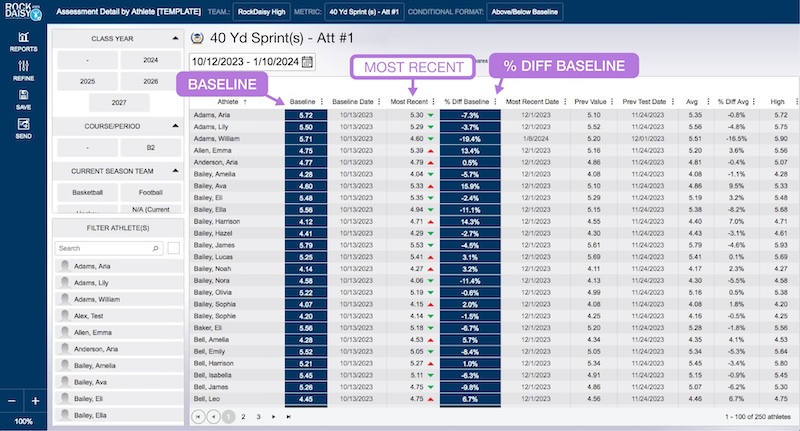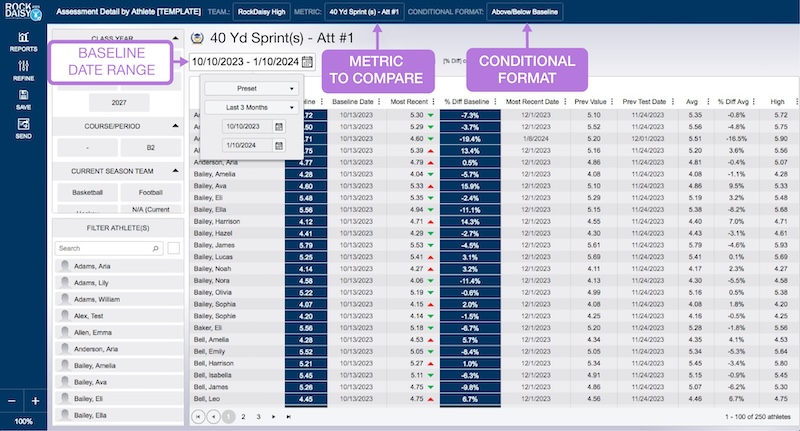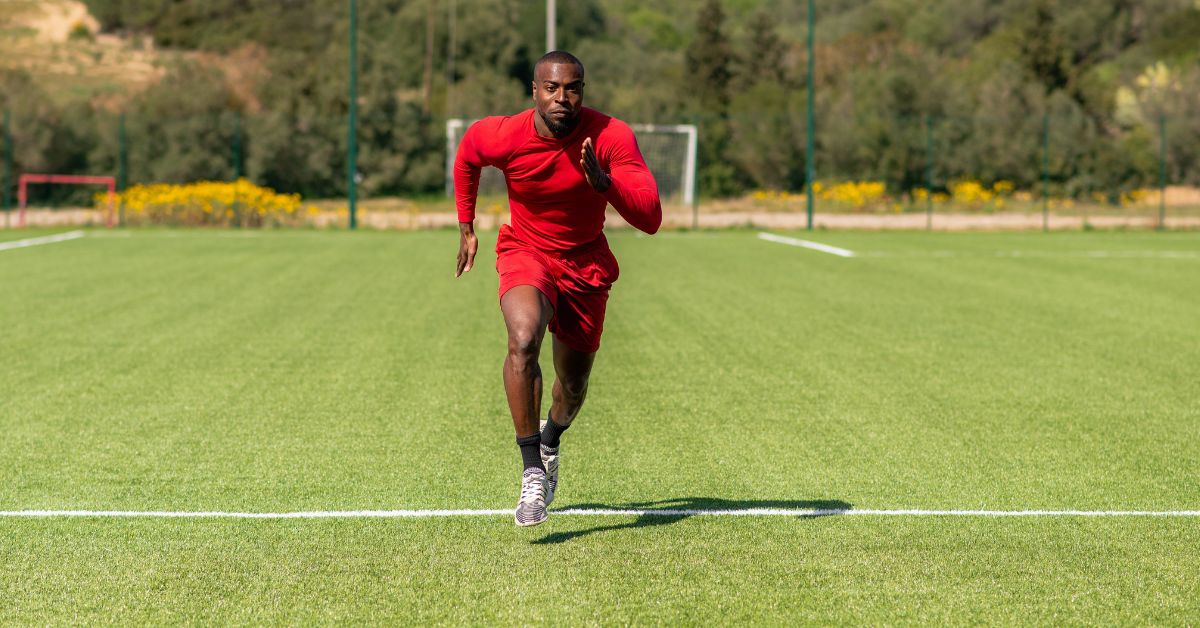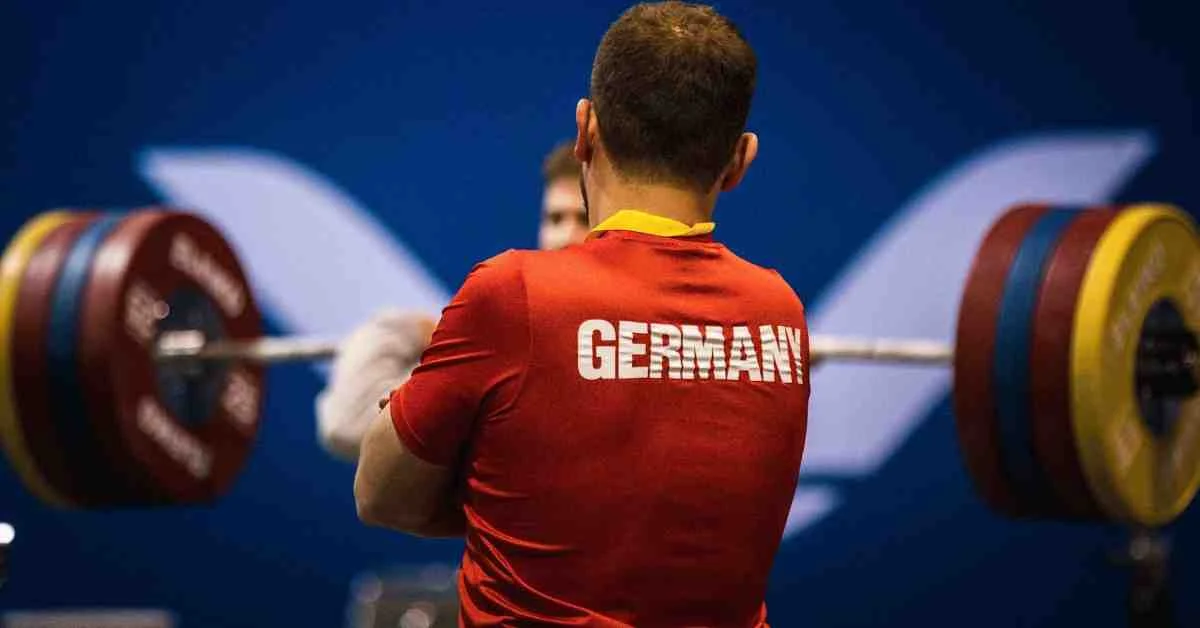As one of the co-founders of the RockDaisy Athlete Management System, I’ve had the privilege of collaborating with a wide range of organizations, from high school to professional teams to everything in between. During my interactions with coaches and athletes, I’ve consistently observed a shared aspiration: the pursuit of peak performance.
One valuable tool in this journey toward excellence is the baseline athlete performance test. This assessment provides a snapshot of an athlete’s current abilities and offers numerous benefits that can lead to better training, performance, and overall success.
A baseline athlete performance test provides a snapshot of an athlete’s current abilities and offers numerous benefits that can lead to better training, performance, and overall success. Share on XWhat Is a Baseline Athlete Performance Test?
A baseline athlete performance test is an evaluation designed to measure an athlete’s physical and functional capabilities at a specific time. This test serves as a reference point or starting point for assessing an athlete’s performance and progress. It typically involves one or more physical assessments and measurements, including strength, speed, endurance, agility, flexibility, and more.

In Figure 1 above:
- The Baseline** score (first column in blue) would be the first test within the selected date range.
- The Most Recent column displays (40 Yard Sprint) values for each athlete.
- The Most Recent column also displays colored arrows to indicate improvement from the Most Recent score as compared to the Baseline
**Note: You can perform a baseline comparison for any metric you store in RockDaisy AMS.
What Period Should You Use for a Baseline Athlete Performance Test?
The period for a baseline athlete performance assessment can vary depending on the specific goals, circumstances, and testing frequency. Two of the most common baseline time frames I’ve observed are:
-
- Short-Term Baseline: Preparing for a single event or competition. For this purpose, a baseline assessment may remain relevant for a few weeks or months leading up to the specific event.
- Seasonal Baseline: In many sports, athletes undergo baseline assessments at the beginning of each season (e.g., pre-season). These assessments help establish a starting point for the season and guide training programs. They typically remain relevant for the duration of that season, which may range from a few months to several months.

Configure your baseline report by selecting the following:
- Baseline Date Range
- Metric To Compare
- Conditional Format
**Note: The Baseline test score is the first test within the selected Baseline Date Range.
Seven Benefits of Baseline Athlete Performance Tests
How can you and your athletes benefit from baseline athlete performance assessments?
1. Personalized Training Programs
One of the primary advantages of baseline athlete performance tests is the ability to tailor training programs to an individual’s specific needs. By identifying an athlete’s strengths and weaknesses, coaches and trainers can design workouts that address areas requiring improvement. This customized approach enhances training efficiency and effectiveness.
2. Goal Setting and Tracking
Setting clear, measurable goals is essential for any athlete’s development. Baseline tests provide a benchmark against which athletes can set realistic, achievable objectives. As athletes train and retest periodically, they can track their progress and adjust their goals accordingly, boosting motivation and focus.
3. Injury Prevention
Identifying physical weaknesses or imbalances through baseline tests allows coaches and athletes to address potential injury risks. By targeting areas of vulnerability, athletes can incorporate injury-prevention exercises into their training routines. Strengthening these weak points can help reduce the risk of injuries during competition.
4. Performance Optimization
Baseline tests help athletes optimize their performance by pinpointing areas for improvement. Athletes can work on weaknesses, enhance their strengths, and fine-tune their skills to maximize their overall performance potential.
5. Competition Preparation
For athletes preparing for competitions, knowing their baseline performance levels is invaluable. It helps them fine-tune their training regimen to peak at the right time, ensuring they are in the best possible shape when it matters most.
6. Objective Feedback
Baseline tests provide athletes with objective feedback about their abilities. This information can be beneficial for athletes looking to secure scholarships, join competitive teams, or advance their careers. Objective data can serve as evidence of an athlete’s capabilities.
7. Motivation and Accountability
Knowing they are being assessed and measured can motivate athletes to give their best effort in training. Baseline tests create a sense of accountability and a competitive edge that can push athletes to strive for excellence.
Baseline tests create a sense of accountability and a competitive edge that can push athletes to strive for excellence. Share on XRealize Your Potential
In the world of sports and athletics, where small improvements can make a significant difference, baseline athlete performance tests have become indispensable. These assessments offer personalized insights, goal-setting capabilities, and injury prevention strategies. Whether you’re a high school athlete, a college player, or a professional competing at the highest level, embracing baseline tests can help you unlock your true athletic potential.
RockDaisy has worked with numerous organizations, from high school to the pros. Our Athlete Baseline report is one of many reports that are ready to use and/or customizable to your needs. With our unique data visualization tools, we provide insight into your data outside of just the raw numbers.
[freelap-share]






